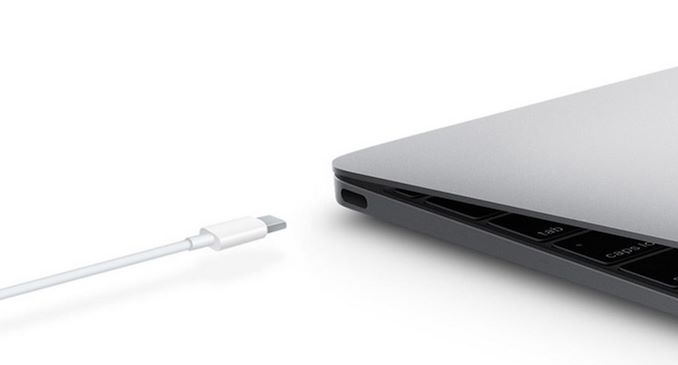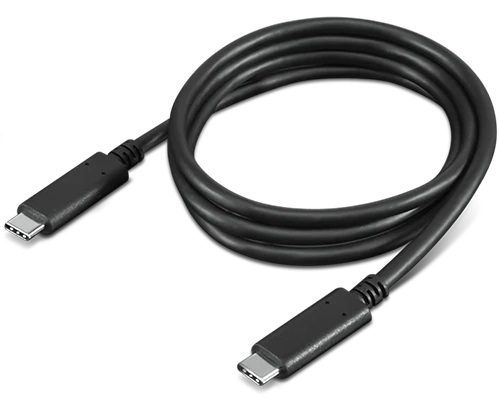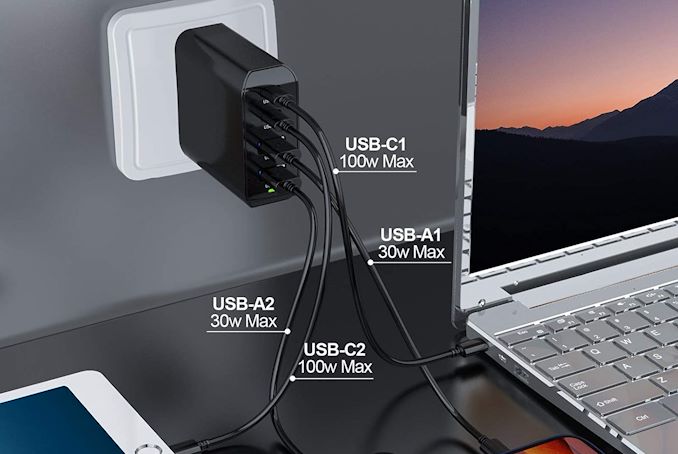USB-C Power Delivery Hits 240W with Extended Power Range
by Ganesh T S on May 28, 2021 8:00 AM EST- Posted in
- USB
- USB PD
- USB-IF
- USB4
- Power Delivery

The USB-IF released a couple of new specifications recently - R2.1 for Type-C and R3.1 for USB-PD. The main update is the 'Extended Power Range' aspect that allows for delivery of up to 240W over Type-C setups supporting the relevant USB-PD profile.
The first USB Power Delivery (USB-PD) specification was released in 2012, and it has seen regular updates over the years. Initially, the focus was on enabling faster charging rates for smartphones and other such devices (which had been using proprietary charging schemes or the USB-BC battery charging specifications). After the release of the Type-C specifications in 2014, USB-PD became a hot topic again. In addition to charging, the attractiveness of a single port for both data and power I/O - particularly from the viewpoint of compact and slim notebooks - brought in the need to shore up the amount of power transferred between a source and a sink. Prior to the release of USB-PD R3.1, certifications from the USB-IF were in place for equipment capable of sourcing / sinking up to 100W (slightly lesser in practical circumstances). The newly released specifications refer to the modes in R3.0 as 'Standard Power Range' (SPR).
USB-PD R3.1 supports three charging models:
- Fixed voltage
- Programmable power supply (PPS), and
- Adjustable voltage supply (AVS).
In the fixed voltage scheme, the Standard Power Range (SPR) mode supports 3A and 5A at 5V, 9V, 15V, and 20V. The 3A configuration supports between 15 and 60W. The 5A scheme requires a specific type of cable and can supply up to 100W. The new Extended Power Range (EPR) mode supports all voltage and current combinations of SPR, and also includes 5A supply at 28V, 36V, and 48V, allowing for support up to 240W.
In the programmable power supply (PPS) scheme available in SPR mode, currents are limited by the source and the cable's advertised capabilities. While the programmed voltage ranges track the ones in the fixed voltage scheme, the actual voltage may vary between 3.3V and 5.9V (for the 5V setting), 11V (for the 9V setting), 16V (for the 15V setting), and 21V (for the 20V setting) in steps of 20mV.
In the EPR mode, the AVS model allows for the voltage to be adjusted between 15V and one of 28V, 36V, or 48V in steps of 100mV depending on the negotiated EPR contract. The source and sink need to enter this specific EPR mode and the cable between them also needs to support EPR for these new voltages to be enabled.
EPR specifications keep safety in mind by allowing sources to scale back to 5V with a hard reset in case of unresponsive downstream sinks. The sink is also required to keep up periodic communication with 'keep-alive' messages to the source in this mode.
Cables supporting EPR need a compulsory electronic marking indicating EPR compatibility using 'EPR Mode Capable' bit set. Standard Power Range cables (SPR) support only up to 100W PD. Receptacles and cables supporting EPR need extra mechanical considerations to prevent shorting / arcing during the connection process. Towards this, the mechanical specifications of the cables as well as receptacles are getting updates. Arcing is possible during unplug operations, and this is being mitigated by length differences between the CC and VBUS pins (allowing the detection of disconnect events early enough to get the source to reduce the current prior to the full disconnection). A snubber capacitor at either cable end is recommended to help with this feature.
EPR enables supply of up to 5A at 48V, but the cables themselves need to support up to 53.65V, and the capacitors used need to be rated for 63V. The electronic marking on the cables are supposed to specify 50V/5A with visible EPR identification icons for end users.
Thumb drives sinking more than 3A or supporting USB4 operations are now mandated to respond to 'cable identity' queries from the host. Additional constraints / parametric adjustments have been made for cables to be fit for USB4 operations. The certification requirements for USB4 active cables have also been updated. They are now required to support Thunderbolt 3 capabilities fully (including Alternate Modes). Since these certification requirements are new, and do not specify updates for passive cables, it is possible that USB4 passive cables that support full capabilities when used with modern USB4 hosts may not operate at full speeds with legacy Thunderbolt 3 platforms.
USB-PD has enabled the use of a single Type-C port for both data and power I/O. In its previous avatar, this worked well for mobile devices such as smartphones and tablets - allowing them to even double up as power banks. In parallel, advances in Gallium Nitride (GaN) semiconductors have enabled the creation of very efficient and compact power electronics equipment.
Combined with the new USB-PD specifications allowing for up to 240W of power delivery, we will soon see USB-C chargers / adapters capable of powering desktop PCs (such as the Intel NUCs - even the gaming-focused models) and All-in-Ones. Currently, these systems still use wall-warts with DC-in barrel jacks to power the internal components. With solutions in sight for this inconvenience, such powerful systems are bound to see new applications.
Source: USB-IF












54 Comments
View All Comments
watersb - Monday, May 31, 2021 - link
The RAVPower 60W charger is optimal size vs performance. The 90W feels like 2x the size.tuxRoller - Monday, May 31, 2021 - link
Graphene!;)
Duncan Macdonald - Friday, May 28, 2021 - link
How long before a number of devices get burned out because the charger did not negotiate the voltage level correctly?"No Name" 5 volt only chargers are safe enough because they can not deliver a high voltage to the connected device - however a charger that (if things go wrong) could deliver 48v to a device designed for 5v could be a very expensive "cheap" charger.
For safety I would recommend not using a charger that is capable of delivering a higher voltage than the connected devices can take (ie do NOT use a charger capable of more than 5 volts on any device that is not also rated for high voltage charging).
RSAUser - Saturday, May 29, 2021 - link
The spec is not that difficult to implement, if you stick with known brands it's definitely a non issue.TheinsanegamerN - Saturday, May 29, 2021 - link
5V is way easier to implement yeet we still hear horror stories of failed chargers. And those are much smaller 10-15 watt chargers.arashi - Thursday, June 3, 2021 - link
Or don't plug your $$$$ machine into a $ power supply?Kaggy - Friday, May 28, 2021 - link
Interesting how this can start trickling down into all types of devices and maybe see a reduction in barrel adapters in the decades to come. It can protect against someone plugging in a higher voltage power adapter and frying the whole device.With promising battery advancements it would be interesting to see more higher powered devices turning portable.
However i'm concerned if the cable connectors portion getting longer as they are prone to stress, maybe there's workaround in the specs sheet but I've seen some early generation docking connectors bending due to stress.
TheinsanegamerN - Saturday, May 29, 2021 - link
We've seen bending issues in out type C laptops. Both the cable and port bend just due to the stress of the thick 100w cable. Lets not even get into what happens when end users dont give the cable slack. The older barrel connectors were durable enough to take the strain for years, type C not so much.Techtree101 - Friday, May 28, 2021 - link
When would the first laptops likely become available with 240W connections? I'm considering an upcoming Alder Lake laptop, depending on the final reviews for them.zodiacfml - Friday, May 28, 2021 - link
We don't need it unless a laptop needs it. This reduces proprietary power adapters for laptops and the it can be reused if the device dies and not worth repairing.I have multiple laptop chargers here at home which I refuse to throw away but remains unused and one is more than 12 years old.